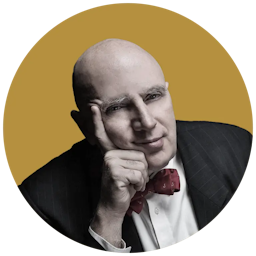Today’s Great ‘Re-Imagines’ History’s Greatest
This article is from the archive of The New York Sun before the launch of its new website in 2022. The Sun has neither altered nor updated such articles but will seek to correct any errors, mis-categorizations or other problems introduced during transfer.

When I was first discovering jazz in the late 1970s, the best general history of the music I found was “The Making of Jazz” by James Lincoln Collier. Mr. Collier went on to write a thoroughly disagreeable biography of Louis Armstrong, but the opening of his chapter on Armstrong in the earlier book remains for me an invaluable discussion on the notion of “genius” and how it relates to Armstrong.
With most artists, Mr. Collier argues, when we look at their backgrounds and their influences we can usually see how they came to the conclusions they did. Contrastingly, with a true genius, such as Armstrong, it is impossible to figure out how he put two and two together and came up with five. True geniuses transcend everything they’ve ever experienced or listened to.
There’s been a general drought of Armstrong activity since his centennial in 2001, but at last something is in the air. This weekend at Rose Hall, Wynton Marsalis has taken upon himself the Herculean task of re-addressing Armstrong’s classic Hot Fives recordings of the late 1920s in concert. There is also a new and valuable addition to the growing library of books on Armstrong: “Louis Armstrong’s New Orleans,” by Thomas Brothers (W. W. Norton & Company).
Mr. Brothers’s book puts me in mind specifically of Mr. Collier’s discussion of Armstrong’s genius in that he does specifically what Mr. Collier described: He points a microscope at the social and cultural environment in which Armstrong grew up, and he examines virtually every possible musical influence that the young trumpeter could have absorbed. In the process, the author comes to a lot of remarkable conclusions about the birth of jazz itself, which happened, not coincidentally, just around the time Armstrong was born in New Orleans.
Mr. Brothers, a professor of music at Duke University and the editor of “Louis Armstrong in His Own Words,” an essential collection of Armstrong’s letters, articles, and other writings, describes how the “congregational harmony” of the Sanctified Church inspired the ensemble sounds of the first New Orleans jazz bands (who took the sound of the church and instrumental music into the dance halls); how the street vendors of the city, who called attention to their wares with music, first exposed Armstrong to the power of the blues; how the part of black expression that had crystallized into the music known as “ragtime” would have a key influence on jazz. Readers learn exactly what Armstrong learned from the creoles of color, who were more formally schooled in the European tradition, and how he first began to receive his own formal training at the Colored Waifs’ home. We are also shown why, for the rest of his life, Armstrong never tired of expressing his gratitude to Joseph “King” Oliver, who mentored him in the practical ways of playing the blues and jazz and eventually brought the brilliant 21-year-old trumpeter out of New Orleans to the world’s doorstep.
What Mr. Brothers does not discuss are the influences on Armstrong beyond black New Orleans: Classical music and especially opera were all over the city (the scholar Joshua Berrett has illustrated conclusively that opera was an important factor in Armstrong’s music).The young Armstrong also listened carefully to Italian and Jewish vernacular music from families he knew and worked for. By 1918, Armstrong owned a phonograph and was hearing all kinds of music on disc.
One frequently overlooked influence is the vaudeville and Broadway headliner Al Jolson, who was the most significant performer to distill a distinct personality into the medium of sound recording before Armstrong. Much of Armstrong’s self-referential, often selfdeprecating comedy style, like his mocking reference to his ersatz-gallic origins in “The Irish Black Bottom,” seems directly inspired by Jolson. In general, a discussion of the non-black and non-New Orleans influences on Armstrong could fill book by itself. But even if such a book were written, Armstrong’s genius is that the sum-total of his “inspirators” — as Armstrong called them — fail to explain his remarkable achievement.
Armstrong’s Hot Fives masterpieces, which Mr. Marsalis will “reimagine” (as the Jazz At Lincoln Center Web site puts it) between Thursday and Saturday, betray the influence of Crescent City brass bands as well as Enrico Caruso (though, perhaps, not in equal portions). But Armstrong created something so unique that not even another brilliant musician, exposed to the same background and educational process as Mr. Marsalis was, could ever produce the same results. Both the opening and closing trumpet cadenzas on Armstrong’s “West End Blues” soar like no aria ever heard at the French Opera House, just like the no-less-remarkable stop-time chorus on “Cornet Chop Suey” was unlike any blues ever played at the picnic grounds at Lake Pontchartrain.
In “Louis Armstrong in His Own Words,” the Great Man tells a touching story. In 1929, not long after he finished the Hot Five series and moved to New York, Armstrong and his band were in residence at Connie’s Inn in Harlem. “One night, a Sunday, all of the white musicians from down on Broadway, came up and gave me a big party — certainly a swell affair. Ben Pollack [the drummer whose band included Benny Goodman, Jack Teagarden, and Glenn Miller] presented me with a beautiful gold wrist watch.”
The music world was still segregated at that time, but Armstrong had already broken down a significant barrier, and he was just getting started. If only one musician born in the American continent or in the 20th century deserves to be ranked as a genius, it is indisputably Louis Armstrong.

